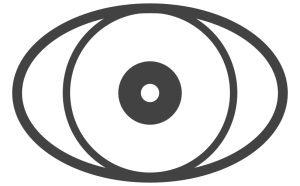From The Motif Series
Cutting is an act of precision—and of loss. Every incision produces both shape and remainder. In ethnographic practice, cutting happens all the time: in fieldnotes, editing, citation, selection. Yet we rarely think of it as a method. To cut is to decide what matters, what stays, what is left aside. In the studio, this gesture is never neutral; it is aesthetic, ethical, and curatorial.
Donna Haraway (2016) reminds us that “all cuts are partial and situated,” that boundaries are not found but made through relations of care and exclusion. The ethnographer’s cut, like the lab’s or the butcher’s, defines a field of attention. It creates clarity by producing blindness—every focus has its periphery. Karen Barad’s (2007) notion of “agential cuts” echoes this idea: each analytical distinction enacts the world differently, separating and connecting phenomena in one move. Cutting is thus not the end of relation but its re-articulation.
In anthropology, cutting has long been associated with montage and composition. Clifford and Marcus (1986) introduced the idea that ethnographic writing is a montage of fragments—an art of selection. Later, Michael Taussig (2011) described the ethnographer’s notebook as a place of “mimetic slashing”: to cut, to copy, to collage. Here, the cut becomes generative rather than destructive. It produces resonances, juxtapositions, accidents—the material thinking that Deleuze and Guattari (1987) call “assemblage.”
Cutting is also the invisible labor of the studio: editing sound, cropping photographs, erasing layers, re-composing a risograph page. The gesture of subtraction allows other forms to emerge. Anthropologist Sarah Pink (2015) has argued that multimodal ethnography requires “careful editing as a sensory practice,” where each cut must attune to rhythm, affect, and atmosphere. The studio ethnographer learns to cut not to simplify, but to tune the composition—to let it breathe.
Ethically, the cut exposes the ethnographer’s complicity. Annemarie Mol (2002) teaches us that “reality is enacted through practices,” and every analytical cut participates in that enactment. What we remove, obscure, or silence defines as much as what we include. Cutting, then, is a practice of care and responsibility. The studio becomes a surgical theater of attention—a place where form is shaped through delicate incisions, guided not by control but by tact.
To cut ethnographically is to accept incompleteness as method. Like your Tray I – Cuts from Trays of Becoming, this motif honors the violence and tenderness of selection: the knife that opens, the crop that frames, the omission that reveals. The challenge is not to avoid cutting, but to do it knowingly—to understand where each incision begins and where its consequences ripple.
Studio Exercises — Cutting as Curatorial Technique
Exercise 1: The Paper Knife
Print a dense page of your own writing—fieldnotes, a draft paragraph, a transcript. With scissors or a craft knife, physically cut the page into strips, following your intuitive sense of where one idea ends and another begins. Rearrange the strips on your desk without rereading them in order. Notice emergent rhythms, unexpected adjacency, and the ghosts of continuity. Photograph the new arrangement. Then, reassemble them into a different order and read aloud. What new narrative appears? What meanings were released by the cut?
Exercise 2: The Negative Frame
Select ten photographs from your fieldwork. Crop each image to focus on what was almost outside the frame—background gestures, residues, peripheries. Print both versions side by side: the original and the cropped. Annotate the margins: What was lost? What gained? Think of each pair as an ethnographic incision revealing the anatomy of attention.
Exercise 3: Sonic Editing
Record a one-minute ambient soundscape from your fieldsite or studio. Import it into an editing program and cut out ten-second intervals at random. Rearrange them. Listen again. Write a 100-word reflection titled “The Rhythm of the Cut.” How does fragmentation alter memory, rhythm, or meaning?
Exercise 4: The Ethics of Omission
Take an old draft of your writing and, using a black marker, redact a full paragraph—erase it completely. Then, write a note beside the void: What did I protect? What did I sacrifice? This practice turns absence into data, reminding you that every cut carries an ethics.
Exercise 5: The Collage Page
Collect discarded fragments from your desk—failed prints, images, torn notes. Assemble them into a collage, but rather than gluing them flat, leave edges unsealed, slightly lifted. The collage should feel like a wound that refuses to close completely. This is the studio’s anatomy lesson: knowledge stitched from losses.
References
- Barad, Karen. 2007. Meeting the Universe Halfway: Quantum Physics and the Entanglement of Matter and Meaning.Durham, NC: Duke University Press.
- Clifford, James, and George E. Marcus, eds. 1986. Writing Culture: The Poetics and Politics of Ethnography. Berkeley: University of California Press.
- Deleuze, Gilles, and Félix Guattari. 1987. A Thousand Plateaus: Capitalism and Schizophrenia. Translated by Brian Massumi. Minneapolis: University of Minnesota Press.
- Haraway, Donna J. 2016. Staying with the Trouble: Making Kin in the Chthulucene. Durham, NC: Duke University Press.
- Mol, Annemarie. 2002. The Body Multiple: Ontology in Medical Practice. Durham, NC: Duke University Press.
- Pink, Sarah. 2015. Doing Sensory Ethnography. 2nd ed. London: Sage.
- Taussig, Michael. 2011. I Swear I Saw This: Drawings in Fieldwork Notebooks, Namely My Own. Chicago: University of Chicago Press.

